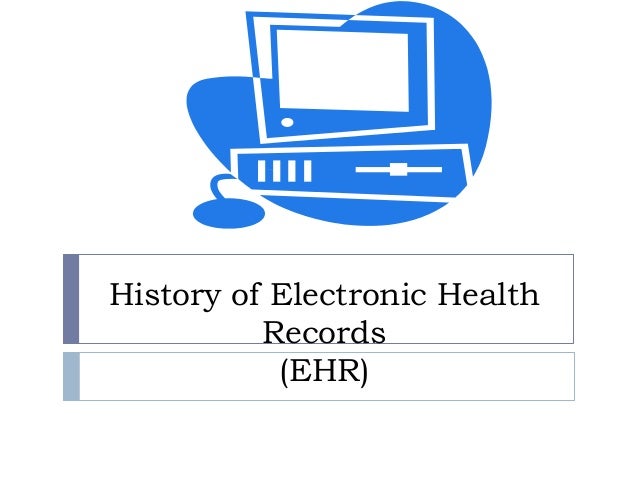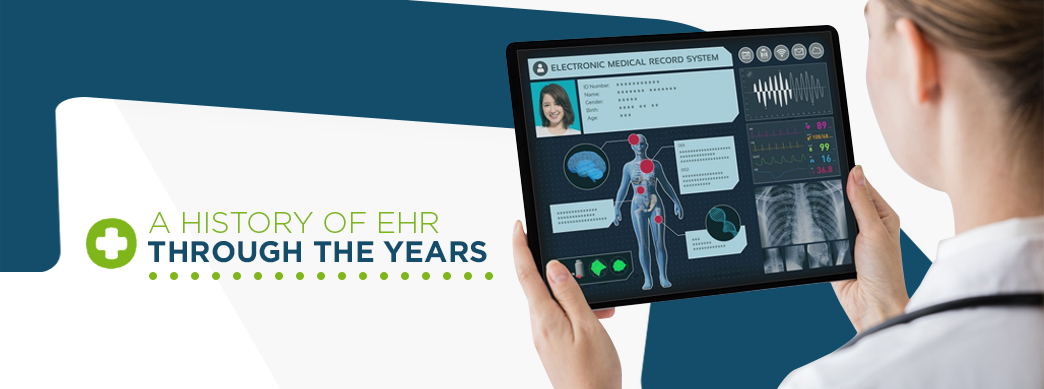

Development of the electronic health record journal of.
What Is The History Of Medical Records Net Health
Figure. electronic health records (ehrs) are consistently used by external organizations to track the quality of care provided based on the information documented in the medical record, which affects hospital accreditation and reimbursement. 1 however, there's concern that technology may cause some patients to feel as if nurses and other practitioners are documenting for the institution. My military health records you should keep copies of your medical documentation, records, and health care history information for your own reference. if you get most care at military hospitals or clinics, you’ll have a dod electronic health record. leading us to improved efficiency by implementing an electronic medical record management system called electronic health records history epic, which puts patients’ histories at doctors’ fingertips – no matter where they are in the system apply now ! learn more about all the wonderful opportunities available at lee health allied health jobs: him / cdi jobs: it jobs

Aug 29, 2019 in this infographic, view the history of electronic health records electronic health records history and see how they may improve your health and health care in the future. Patient data has evolved during the past several years. early patient medical records included brief, written case history reports maintained for teaching .
What Are The Advantages Of Electronic Health Records
The electronic health record (erc) can be viewed by many simultaneously and utilizes a host of information technology tools. patients routinely review their electronic medical records and are keeping personal health records (phr), which contain clinical documentation about their diagnoses (from the physician or health care websites). Electronic health records. an electronic health record (ehr) is an electronic version of a patients medical history, that is maintained by the provider over time, and may include all of the key administrative clinical data relevant to that persons care under a particular provider, including demographics, progress notes, problems, medications, vital signs, past medical history, immunizations, laboratory data and radiology reports the ehr automates access to information and has the potential. Mar 1, 2011 the federal government began using ehr in the 1970s with the department of veteran affairs' implementation of vista, originally known as . Ehrs are a vital part of health it and can: contain a patient’s medical history, diagnoses, medications, treatment plans, immunization dates, allergies, radiology images, and laboratory and test results allow access to evidence-based tools that providers can use to make decisions about a patient’s care automate and streamline provider workflow.
Dec 19, 2019 why were electronic health records created? the concept of the ehr has gone through several iterations over time. the history of electronic . Emr is described as an electronic record of a patient’s health-related information in regards to a single healthcare organization. depending on the software, emr replaces or collaborates with the traditional method of charting on paper. An electronic health record (ehr) is an electronic version of a patients medical history, that is maintained by the provider over time, and may include all of the key administrative clinical data relevant to that persons care under a particular provider, including demographics, progress notes, problems, medications, vital signs, past medical.
software programmers without the consent of the author electronic medical recordspatients' demographics, health information, diagnosis, history, meds given, photos, etc. print prescriptions via wifi See more videos for electronic health records history.
Learn The History Of Ehr Electronic Health Records Icanotes
Objectives: describe the state of electronic health records (ehrs) in 1992 and their evolution by 2015 and where ehrs are expected to be in 25 years. further to discuss the expectations for ehrs in 1992 and explore which of them were realized and what events accelerated or disrupted/derailed how ehrs evolved. May 20, 2016 traditionally, health records were written on paper, maintained in folders divided into sections based on the type of note, and only one copy was . Apr 16, 2019 the book introduced the idea of ehrs as “computer-based patient records” (cpr ). it was the first time an electronic patient record was viewed as .
Electronic medical records, like other medical records, must be kept in unaltered form and authenticated by the creator. under data protection legislation, the responsibility for patient records (irrespective of the form they are kept in) is always on the creator and custodian of the record, usually a health care practice or facility. Dec 12, 2019 initially all patient information was recorded on paper (or parchment, in ancient times). however, the burgeoning computer age in the mid-1960s .
An electronic health record (ehr) is a digital version of a patient’s paper chart. ehrs are real-time, patient-centered records that make information available instantly and securely to authorized users. while an ehr does contain the medical and treatment histories of patients, an ehr system is built to go beyond standard clinical data collected in a provider’s office and can be inclusive. Shortly thereafter, in 1972, the first electronic medical record system was developed by the regenstrief institute. although this technology was the first of its kind, .
The electronic health record (ehr) is a longitudinal electronic record of patient health information generated by one or more encounters in any care delivery setting. included in this information are patient demographics, progress notes, problems, medications, vital signs, past medical history, immunizations, laboratory data and radiology electronic health records history reports. The electronic health record (ehr) is a longitudinal electronic record of patient health information generated by one or more encounters in any care delivery setting. included in this information are patient demographics, progress notes, problems, medications, vital signs, past medical history, immunizations, laboratory data and radiology reports.
An electronic health record (ehr) is the systematized collection of patient and population electronically stored health information in a digital format. these records can be shared across different health care settings. records are shared through network-connected, enterprise-wide information systems or other information networks and exchanges. ehrs may include a range of data, including. Like the iliad or the odyssey, our electronic health records chronicle the story of a patient's healthcare electronic health records history over time. business as un usual software built in-house (no acquisitions) 32% of operating expenses invested in r&d. employee-owned and developer-led 1 overall software suite in klas.
What is the history of medical records? net health.
The history of electronic health records is still being written. ehrs have come a long way since the development of problem-oriented medical records, and there’s no sign of that innovation stopping any time soon. for behavioral health providers, two particular trends stand out for the future evolution of ehr. In that regard, emrs are not much better than a paper record. electronic health records (ehrs) do all those things—and more. ehrs focus on the total health of the patient—going beyond standard clinical data collected in the provider’s office and inclusive of a broader view on a patient’s care.
The real history of electronic medical records begins in the 1960s with “problem-oriented” medical records that is, medical records as we understand them today. the problem-oriented medical record was a breakthrough in medical recording. up until this time, doctors usually recorded only their diagnosis and the treatment they provided. Nov 26, 2018 medical record keeping became commonplace during the 20th century, but it was new computer technology developed in the 1960s and '70s that .
A graphical user interface known as the computerized patient record system (cprs) allows health care providers to review and update a patient's electronic medical record at any of the va's over 1,000 healthcare facilities. cprs includes the ability to place orders, including medications, special procedures, x-rays, patient care nursing orders.